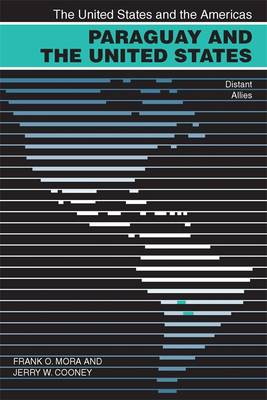
- Afhalen na 1 uur in een winkel met voorraad
- Gratis thuislevering in België vanaf € 30
- Ruim aanbod met 7 miljoen producten
- Afhalen na 1 uur in een winkel met voorraad
- Gratis thuislevering in België vanaf € 30
- Ruim aanbod met 7 miljoen producten
Zoeken
Omschrijving
Ranging from the 1840s through the early twenty-first century, this study of shared political, economic, and cultural histories fills significant gaps in our understanding of Paraguayan-U.S. relations. Frank O. Mora and Jerry W. Cooney tell how an initially rocky beginning between the two countries, marked by diplomatic posturing, shows of military force, and failed business schemes, gave way to a calmer period during which the United States backed Paraguay's territorial claims against its neighbors, prospects grew brighter for American entrepreneurs, and Paraguay embraced Pan-Americanism.
It was not until the 1930s that the two countries engaged in earnest as the United States attempted to mediate the Chaco War between Paraguay and Bolivia. Then, as the authors write, "hemispheric solidarity in World War II, the cold war in Latin America, the 'balance of power' among states in the Río de la Plata, and the question of U.S. support for, or aid to, Latin American dictators" became matters of mutual interest. The dictatorship of Alfredo Stroessner (1954-89) spanned much of this era, and a shared attitude of realpolitik typified U.S.-Paraguayan relations during his rule. Post-Stroessner, the United States has stood by Paraguay during its transition to democracy, despite lingering concerns about such issues as drug trafficking and intellectual piracy. The countries should grow closer with time, the authors conclude, if Paraguay resists the continent's leftward political shift and remains a solid partner in U.S. antiterror initiatives in South America.Specificaties
Betrokkenen
- Auteur(s):
- Uitgeverij:
Inhoud
- Aantal bladzijden:
- 352
- Taal:
- Engels
- Reeks:
Eigenschappen
- Productcode (EAN):
- 9780820329321
- Verschijningsdatum:
- 25/08/2007
- Uitvoering:
- Paperback
- Formaat:
- Trade paperback (VS)
- Afmetingen:
- 154 mm x 226 mm
- Gewicht:
- 480 g

Alleen bij Standaard Boekhandel
+ 68 punten op je klantenkaart van Standaard Boekhandel
Beoordelingen
We publiceren alleen reviews die voldoen aan de voorwaarden voor reviews. Bekijk onze voorwaarden voor reviews.











